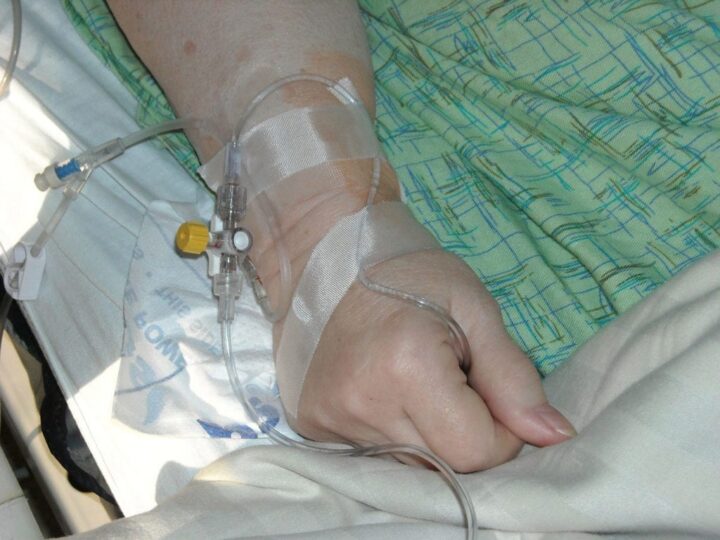From June 2-5, 2021, the European Alliance of Associations for Rheumatology (EULAR) held its EULAR 2021 Virtual Congress. During the event, participants discussed basic, translational, and clinical science within the realm of rheumatology. According to MedPage Today, one late-breaking abstract presented centered on results from a Phase 3 study evaluating secukinumab (Cosentyx) for patients with 2 juvenile idiopathic arthritis (JIA) subtypes. Check out the data within the Annals of the Rheumatic Diseases.
Secukinumab
An article in Arthritis Research & Therapy describes secukinumab as:
a fully human immunoglobulin G1-kappa monoclonal antibody that directly inhibits interleukin (IL)-17A.
Let’s break that down a little. A monoclonal antibody is a lab-created antibody designed to mimic antibodies and improve immune response. Next, IL-17A is a pro-inflammatory cytokine. Ultimately, this means that it can prompt inflammatory responses in your body. So secukinumab is designed to enhance the immune system and reduce or prevent inflammation.
According to the presentation, secukinumab has previously shown benefit for adult patients with rheumatic conditions. Thus, researchers wanted to understand whether it would also show benefit for pediatric patients. In particular, researchers evaluated the treatment in relation to enthesitis-related arthritis (similar to adult axial spondyloarthritis) and juvenile psoriatic arthritis (similar to adult psoriatic arthritis). Both of these forms exist under the umbrella of JIA.
The Study
Altogether, 89 patients enrolled, with a mean age of 13. Of these, 36 patients had juvenile psoriatic arthritis and the remaining patients had enthesitis-related arthritis. For the first 12 weeks (3 months), all patients received either 75-150mg subcutaneously administered secukinumab. However, in the next period, patients received either secukinumab or a placebo every 4 weeks (1 month). This treatment occurred for up to 104 weeks until a JIA “flare” occurred. In this case, researchers described flares as 30% worse JIA symptoms. Once a flare occurred, patients were placed back on secukinumab. During the trial, researchers discovered:
- 90.4% of patients achieved at least 30% improvement of JIA signs and symptoms during the 12 weeks of secukinumab treatment. In fact, 36.1% of patients even experienced JIA inactivity.
- At the end of the treatment period, researchers determined that patients receiving secukinumab took longer to reach a “flare” and had significantly fewer flares.
- HOWEVER – this was true for those who initially took secukinumab and also received it in the next 104 weeks, with no placebo. Those who initially received secukinumab and were switched to a placebo during the trial experienced more disease flares.
- Thus, secukinumab has the potential to reduce flares but should be used as a regular treatment.
- By week 104, 47.2% of those treated with secukinumab achieved JIA inactivity.
- Ultimately, the treatment was relatively safe and well-tolerated. However, many adverse reactions did occur. This ultimately caused 10 patients (5 receiving secukinumab and 5 receiving placebo) to stop treatment. Adverse reactions included:
- Infection
- Gastrointestinal distress/diarrhea
- Headache
Juvenile Idiopathic Arthritis (JIA)
Formerly known as juvenile rheumatoid arthritis, juvenile idiopathic arthritis (JIA) is the most common form of arthritis in those under age 16. As the name suggests, JIA causes joint inflammation (arthritis) in younger (juvenile) patients and has no known origin or cause (idiopathic). However, in many cases, the many forms of JIA are considered autoimmune disorders. Basically, this means that the immune system mistakenly attacks the joints, causing pain and inflammation.
Altogether, there are multiple forms of JIA, including undifferentiated arthritis; psoriatic juvenile idiopathic arthritis; oligoarticular juvenile idiopathic arthritis; and polyarticular juvenile idiopathic arthritis (with rheumatoid factor either positive or negative). However, more forms do exist. Some JIA subtypes are more common in females. JIA can affect multiple joints.
While symptoms may vary depending on subtype, there are common symptoms. These include:
- Joint pain and stiffness
- Note: This symptom may be present following a nap or sleeping. In some cases, joint pain may manifest in limping or other signs of restricted movement.
- Limited range of motion, often in the hands, feet, and knees
- Red, swollen, warm, or tender joints
- Skin rash
- Swollen lymph nodes
- Fever
- Appetite loss
- Fatigue
- Reduced activity level
- Hesitance or resistance to using a specific joint
- Growth problems
- Eye inflammation, such as uveitis or iritis







